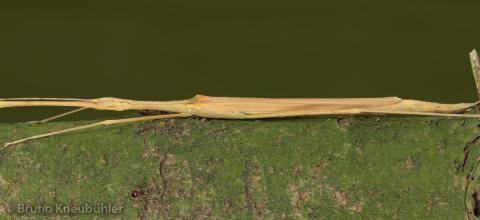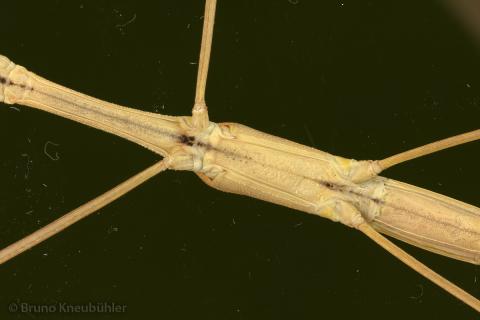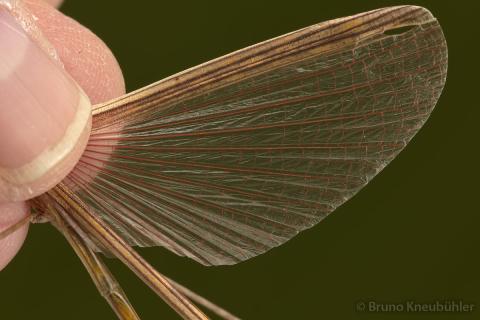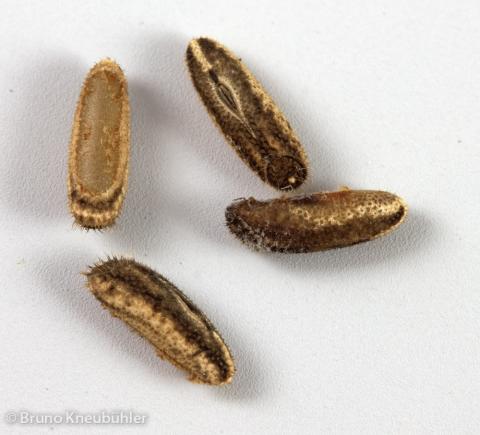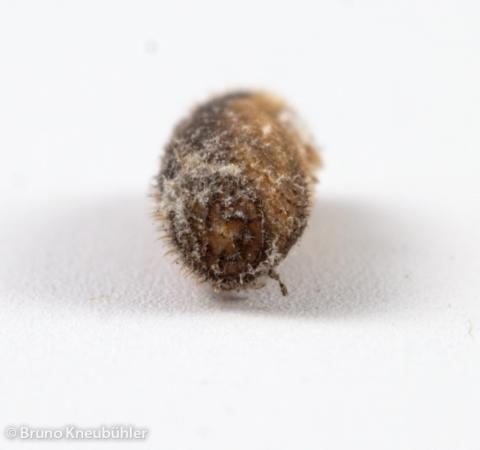
Genus
Species
Stock
CLP
539
PSG
352
Culture status
In culture
Foodplants
Bramble (Rubus spp.)
Breeding notes
(by Bruno Kneubuehler)
General Notes
- 2011 – first successful culture by Bruno Kneubühler
- 2012 – this species is being distributed as Sipyloidea biplagiata „Cuc Phuong“
_________________
Origin
- Cuc Phuong, Vietnam
_________________
Females
- typical phasmids
- about 10 – 11 cm
- straw-coloured, few females were reddish-brown
- light yellow spots on the forewings (tegmina)
- antennae are longer than forelegs and light-dark annulated
- thorax surface is dorsally strongly granulated (especially for mesothorax)
- long cerci
- the membranous part of the hind wings (anal region of alae) is transparent and it's base is red
_________________
Males
- very typical and thin phasmids
- about 8 – 8.5 cm
- their colourations is a bit more pronounced than the females
- mainly light brown with darker markings
- coloration is rather consistent amongst males
- strongly yellow dots on the forewings (tegmina)
- antennae are longer than forelegs and light-dark annulated
- the membranous part of the hind wings (anal region of alae) is transparent and it's base is red
_________________
Nymphs
- 20 mm (L1)
- green or yellowish-green (L1)
- antennae with white tips
- distinction between ♀/♂ for young nymphs is rather difficult by the naked eye. But by L4 / L5 it is possible (see photos on the right)
_________________
Eggs
- elongate – oval
- about 4 x 1.5 mm
- brown mottled
- hairy, matt
- egg lid (operculum) is beveled compared to the egg's longitudinal axis
- no distinct capitulum present
_________________
Food Plants
- freshly hatched nymphs, older nymphs and adults feed very well on bramble (Rubus sp.)
_________________
Behaviour
- nymphs don't like to be touched and try to crawl away, but again freeze after a few steps
- older nymphs and adults usually not hide out on the leaves or stems of the food plants, but rather on the walls of the cage. Could this imply that they hide out in the wild during the day on tree trunks or thicker branches ….?
- both males and females can fly
- especially the adult males try to escape flying quickly when they feel threatened
- the males ability to fly is rather impressive (for phasmids). They can fly for rather long distances, flying upwards is easy for them and they can even land headfirst on the ceiling. So far I could not observe this in any other phasmid species
- adult females mainly try to escape by crawling away when they feel threatened. They can fly, but do so rather seldom – and when they do, then only for short distances
- after touching adult specimens I have noticed a grassy smell, which implies that they produce a defensive spray (which could be irritating to the human eyes)
- matings occur during the night and are short, males do not stay together with the same female for a longer time period
_________________
Developement
- incubation time (HH-incubation on slightly damp sand at 20 - 23 °C) is about 8 – 9 weeks, so rather short
- spread some dry moss over the eggs, especially when the eggs are detached from material to which they have been glued to. This will make it much easier for the nymphs to hatch unscathed and it also reduces mould growth to some extend
- hatching ratio was very high (> 50%)
- males will be adult after about 3 months (at 20 – 23°C), while females will be adult after about 4 months
- females start laying eggs after 2 -3 weeks
- eggs are glued to anything in the cage (leaves, stems, cage walls and floor). Yet it is easy to detach the eggs from the substrate carefully
- about 10 – 15 eggs per female and week
- adult males seem to be rather short lived (about 1 – 3 months), while adult females can live for several months
_________________
Breeding Notes
- a very easy to keep species
- as they are flying well, one should be careful with open windows in the breeding room
- keep the nymphs in a cage with good ventilation, but take care that the humidity does not drop too low
- a constantly wet paper towel on the floor of the cage helps raising humidity
- nymphs can be kept in a Faunabox (or similar cages)
- move nymphs to a bigger cage as they grow bigger
- I have never sprayed nymphs or adults with water
- make shure that nymphs, which are about to undergo their adult moult, do not find places in the cage which would not offer them enough space beneath to moult successfully






